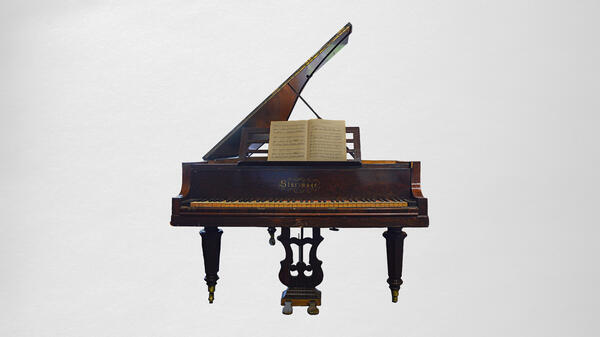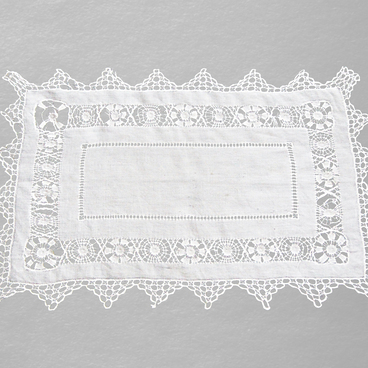The grand piano in the estate museum permanent exhibition was supposedly made at the end of the 19th century by Moscow Musical Instruments Firm Sturzwage. Leopold Sturzwage, the founder of the eponymous factory, experimented a great deal with the shape and construction of the grand piano. His musical instruments were popular among aristocrats, merchants, musicians and enlightened amateurs. In particular, composer Alexander Borodin owned a Sturzwage grand piano, and composer Nikolai Medtner amorously called his instrument ‘my dear brown Sturzwage’.
Also, Konstantin Stanislavsky had Sturzwage grand pianos in his study at his dacha. The French family’s last representative, named also Leopold by the family tradition, became a famous painter. He studied with the artists Konstantin Korovin and Leonid Pasternak in Moscow, and emigrated to Paris in 1908, where he participated in exhibitions jointly with the avant-garde group “Jack of Diamonds”.
The grand piano, currently placed in the estate museum permanent exhibition, was kept for a long time in the apartment of Pyotr Semyonov-Tyan-Shansky’s brother Nikolai Semyonov in St. Petersburg. He was a senator, statesman and at the same time a famous field naturalist and researcher, and also a literary figure. He was acquainted with many composers and musicians of the second half of the 19th century.
Unfortunately, it is impossible to determine who exactly, except for the Semyonovs, played this musical instrument. At the beginning of the twentieth century, after Nikolai Semyonov’s death, the grand piano was brought to the family estate in Ryazanka, where the senator’s widow permanently lived.
At the end of 1917, Mikhail Semyonov, the retired lieutenant of the Izmailovsky Life-Guards Regiment and the last owner of the estate, had to leave the family estate and move to the district town of Ranenburg. There he taught music at the pedagogical college. After his death, the grand piano was kept in the Technical College, and after the school was dissolved in 1954, it ended up in the family of musician and artist Yevgeny Veselkin.
His son, artist Pavel Veselkin, donated the grand piano to the museum-estate which opened In 1997. As of today, the Sturzwage grand piano is the only item in the museum permanent exhibition, definitely kept in the Ryazanka estate before 1917.
Also, Konstantin Stanislavsky had Sturzwage grand pianos in his study at his dacha. The French family’s last representative, named also Leopold by the family tradition, became a famous painter. He studied with the artists Konstantin Korovin and Leonid Pasternak in Moscow, and emigrated to Paris in 1908, where he participated in exhibitions jointly with the avant-garde group “Jack of Diamonds”.
The grand piano, currently placed in the estate museum permanent exhibition, was kept for a long time in the apartment of Pyotr Semyonov-Tyan-Shansky’s brother Nikolai Semyonov in St. Petersburg. He was a senator, statesman and at the same time a famous field naturalist and researcher, and also a literary figure. He was acquainted with many composers and musicians of the second half of the 19th century.
Unfortunately, it is impossible to determine who exactly, except for the Semyonovs, played this musical instrument. At the beginning of the twentieth century, after Nikolai Semyonov’s death, the grand piano was brought to the family estate in Ryazanka, where the senator’s widow permanently lived.
At the end of 1917, Mikhail Semyonov, the retired lieutenant of the Izmailovsky Life-Guards Regiment and the last owner of the estate, had to leave the family estate and move to the district town of Ranenburg. There he taught music at the pedagogical college. After his death, the grand piano was kept in the Technical College, and after the school was dissolved in 1954, it ended up in the family of musician and artist Yevgeny Veselkin.
His son, artist Pavel Veselkin, donated the grand piano to the museum-estate which opened In 1997. As of today, the Sturzwage grand piano is the only item in the museum permanent exhibition, definitely kept in the Ryazanka estate before 1917.



